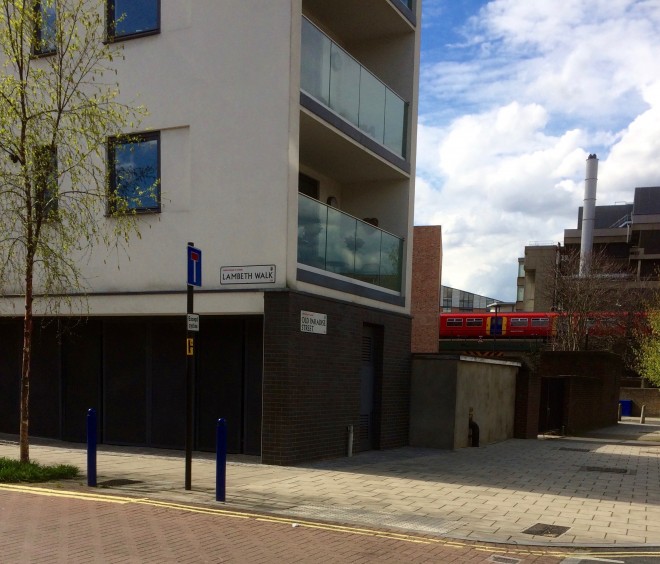Rent 8s, burial insurance 1s 8d, boot club 1s, coal 1s, gas 8d, wood 3d, soap 4 ½ d; left for food 7s ½ d. Mr B. is a printer’s labourer, earning between 20s and 26s a week, who allows his wife 20s a week. They have six children. The average per head for food is 1 ½ d a day. Remarkably none of their children has died. Mr and Mrs B. have not had to call upon the burial insurance.
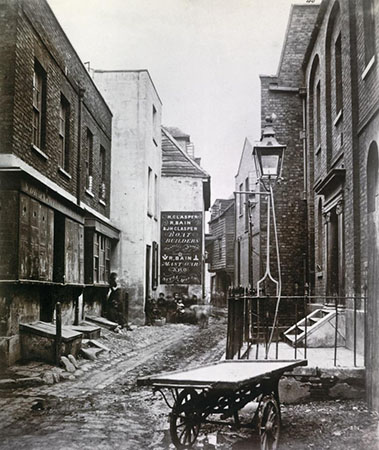
These stark, but telling, figures were recorded between 1911 and 1912. The Bs were one of thirty-four Lambeth families visited weekly over that period by a team of volunteer interviewers from the recently formed Fabian Women’s Group. The first meeting of the FWG had been held in 1908 in the Kensington drawing room of Maud Pember Reeves, joint founder with the anarchist Charlotte Wilson; other members included Susan Lawrence, Beatrice Webb and Edith Nesbit. Maud, her sister-in-law Effie Lascelles and Dr Ethel Bentham, a pioneer of social medicine, initiated the ‘Mother’s Allowance Scheme in Lambeth”. Why did more infants die in Lambeth than in Kensington? How did a working man’s wife bring up a family on 20s a week? The results of their research appeared in 1912, in Fabian Tract No 162: ‘Family Life on a Pound a Week’, twenty two pages of raw factual material which would provide the basis for Round About a Pound a Week, published the following year.
Among the interviewers was Maud Pember Reeves’ 24-year-old daughter, Amber Reeves, whose novel A Lady and Her Husband (Persephone Book No 116), one of Persephone’s Spring 2016 books, addresses some of the same issues, and includes details which she must surely have observed with her mother in Lambeth: the torn lace curtain stretched across the window, and old tin cans used as ornaments. MPR specifies ‘red and yellow cocoa tins’ but it’s hard to doubt that mother and daughter were together when they saw this touching evidence of women’s determination to defeat the drabness of their homes, to assert some control, in some small way to personalise their surroundings. MPR’s decision to expand the tract generously acknowledges this individuality. Putting further flesh on the figures, she dignifies the women who are managing on round about a pound a week. They are, she insists, no more like one another than the women of Belgrave Square or Kensington, if anything less so.
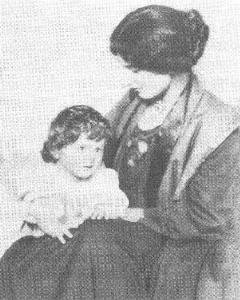
The Tract opened with a question, ‘Who are the poor?’. Round About a Pound a Week opens with an invitation, ‘Take a tram from Victoria to Vauxhall Station. Get out under the railway arch which faces Vauxhall Bridge, and there you will find Kennington Lane.’ Leading her readers under the railway arches, dodging trams, and brewers’ drays, carts and coster-barrows, as far as Lambeth Walk, MPR takes us to the small area of South London chosen for the research. It is an area which is largely coloured light blue in Charles Booth’s 1899 Poverty Map: light blue indicates earnings between 18s and 21s, regular for most, intermittent for the unlucky, where, in Booth’s words, ‘as a general rule they have a hard struggle to make ends meet, but they are as a body, decent steady men, paying their way and bringing up their children respectably.’ Not the poorest of the poor, and most definitely not ‘slum people’. One or two streets are dark blue (very poor), but only two hundred yards away are ‘Well-to-do’ streets, marked in red. It is, as it happens, an area I know quite well, living less than half a mile from Lambeth Walk. My street on the same map was rated ‘fairly comfortable. Good ordinary earnings’.
The nineteenth-century houses have been demolished to make way for dreary blocks of flats, and a few dreary shops. A small number of the original shop fronts remain in Lambeth Walk, but they have been gentrified with smoked, etched glass concealing architects’ studios, trendy offices, and, with no apparent sense of irony, a Poetry Studio. The Mission Hall is now the Henry Moore Sculpture Studio, the Ragged School an up-market restaurant, the dreaded workhouse is a cinema museum, and the Lying-In Hospital, where the Fabian Women recruited the families for their project, is part of a Premier Inn.

According to the Scheme, expectant mothers were to be given 5s for three months before the birth of their babies, and for one year afterwards to pay for extra nourishment, in exchange for which they would record details of their weekly expenditure. Forty-two families were enlisted, all in reasonable health – a plan to exclude those suffering from pulmonary disease had to be abandoned when it was found to be so widespread that half the families would have been ruled out. Eight withdrew when the fathers objected to such close scrutiny of the weekly expenditure. Eight mothers dictated their accounts to their husbands, or children. Within a few pages a vivid picture emerges of the families: poorly educated women, none in rude health, worn out with childbearing, child rearing, and general coping, some with proud and controlling husbands, willing to forego 5s a week to keep their affairs private, many with children better educated than themselves.
Children go to school, but must be fetched back for lunch. Husbands go to work, some to the local pottery, closed in the 1950s, some to the print-works, destroyed by a bomb in 1941; several are carters, one a scene-shifter; one is a carman’s trouncer, one a pugilist, another a feather-cleaner’s assistant. – the past is another country. Most keep back only a small part of their wages for themselves, for tram fares, boots, dinner, perhaps 1d a day for tobacco and 2d for beer, allowing their wives some four-fifths of their wage. Some are more generous, others, we surmise from the figures, selfish to the point of cruelty. Contented newly-weds rapidly find themselves caught in a downward poverty spiral as their families grow, developing ‘into a burden which is too great for their strength’. Still for the most part in their twenties, borne down by the struggle to balance unbalanceable books, the young women in the survey ‘look to be in the dull middle of middle age’.
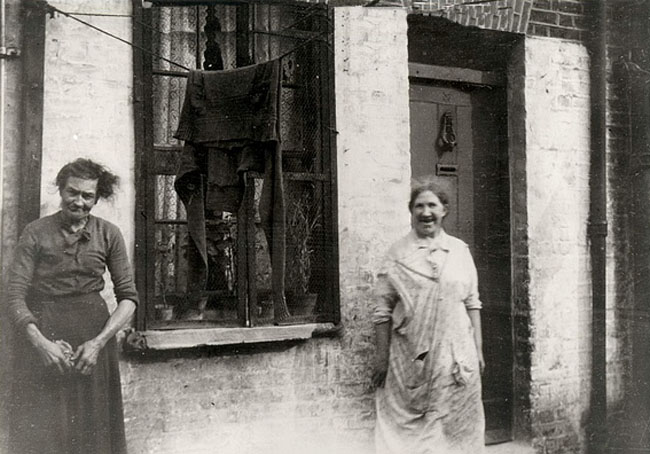
Maud Pember Reeves is damning about their housing, ‘The rent is too dear; the houses are too old or too badly built or both; the streets are too narrow; the rooms are too small, and there are far too many people to sleep in them’. None in the survey had fewer than two children living, the largest family had eight children (some had born more, up to ten or eleven but lost many of them); the visitors found families of five or six living in one room and became aware that three or four to a bed was the norm. Only a night-working husband might enjoy the ‘luxury’ of a bed to himself, while the children were at school; a lucky baby might have a cot to herself (insisted on by the FWG project) – a chaff-filled mattress in a banana crate – but even such a rudimentary cot was beyond the means of most families. ‘There are not enough chairs, though too many for the room. There is not enough table space, though too much for the room. There is no wardrobe accommodation other than the hook behind the door, and possibly a chest of drawers, which may partly act as a larder, and has in the visitor’s experience been used as a place in which to put a dead child.’ Maud’s shock is as palpable as her sympathy and quiet rage. Needing no further elaboration, the most horrifying detail is left to the end, with no added comment.
We learn something about each of the women, until we believe that we might have distinguished one from another as they scrubbed their steps, queued for bread, or carried their new baby to be weighed. A few we know better. The doors that MPR opens on their lives are held ajar a little longer. The cramped homes are described as ‘rigidly clean and tidy’, ‘fairly clean and tidy’ and ‘moderately clean but very untidy’, but no criticism is levelled at the untidy, nor praise lavished on the rigidly clean. MPR is deliberately, and remarkably, objective, although one does detect a soft spot for Mrs K, the only one not rated a ‘notable manager’. Surely she is the un-named mother, ‘who is not disturbed by a little mud on the floor’ and consequently has ‘vitality left to deal with more important matters’. Mrs K is more happy-go-lucky than her neighbours, her ‘skirt looks as though rats had been at it, her blouse is never where it should be at the waist’, and the dark corners of her rooms ‘would not bear inspection’, but she has imagination and unlike the others she has retained a spark of humour. Mr K, fortunately, is similarly easy-going, and far from resenting the time she has spent listening to Little Lord Fauntleroy at her mothers’ meeting, takes her to the theatre to see it performed, which thrills her. Their children are ‘the most vital and noisy and troublesome’, and, though MPR only implies it, the only ones in whom she detects any chance of a better future. Never critical of individual women, with her brilliantly economical use of words, she paints a devastating picture of the fate awaiting the majority of Lambeth children, to whom she devotes a whole chapter. ‘Want of joy of life was the most salient feature of the children as they grew older. They too readily accepted limitations and qualifications imposed on them, without that irrational hoping against hope and belief in favourable miracles which carry more fortunate children through many disappointments. These children never rebel against disappointments. It is their lot.’
In stark contrast with Mrs K is Mrs S, a wonderful manager, who makes all the children’s clothes. Mrs S is a ‘worn, thin woman with a dull slow face’; her two rooms are as clean as a new pin; she has a knack for getting things cheap – a large bag of bread, fetched once a week from the back door of a restaurant by her eldest boy, hangs on a nail. ‘She loved her family in a patient, suffering, loyal sort of way which cannot have been very exhilarating for them.’ She has lost five children and will lose a sixth: 2s a week on burial insurance was a wise decision. She cried very little over the deaths of her children, ‘I done all I could. ‘E ‘ad everythink done fer ‘im’, is all that she can say. About Mr S, she is equally reticent, but her few words are horribly revealing: he was ‘a good husbin’, but not desirable on Saturday nights. There were worse husbands than Mr S: Mr T who lives in two rooms with six children and insists on having both breakfast and tea cooked specially for him and insists on eating alone; Mr O, whose wife must shop at night, when she can go out in her slippers, because he will not allow her to save for boots for herself. The women were asked to describe their days in detail. Mrs O’s is not as full as most – she has only two children – but her timesheet confirms our suspicions about her husband: he returns from work at any time between five and seven o’clock, eats the tea she has prepared, then changes and goes out. Her day end at 11pm: ‘If husband has come in go to bed’. And if not? Mrs O’s life is hard, not only because of her husband’s cruelty, but because for want of a pair of boots, it is exceptionally lonely.
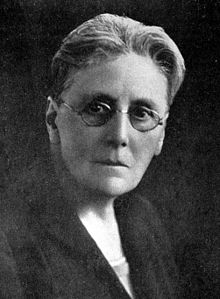
Neighbours and the neighbourhood were particularly important and comforting. Families were reluctant to move away. A single mother with a sickly child requiring frequent hospital visits could rely on the street in times of crisis: one woman would accompany her to the hospital, while another took over the baby, and a third stood in for her at her work. No wonder one man chose to walk for three hours twice a day to a job in North London rather than uproot his family. MPR does not judge him any more than she judges the contents of the women’s shopping baskets, though meticulously listed and costed, they reveal a diet that is repetitive, dull and far from healthy. The daily allowance for women and children rarely exceeds 3d per person, dropping as low 1d or less when the man of the family is out of work, or only working limited hours. It is hard to compare values, but one need only think of the old rhyme, ‘one a penny two a penny hot-cross-buns’, to realise what that meant in terms of a daily diet. Far more was spent on bread than on any other food, followed by meat, sugar and vegetables. A little extra might go on a rasher of bacon or a piece of fish for the breadwinner. Worryingly little was spent on milk. All but one of the project babies was born healthy. One of the thirty-four weighed less than six pounds, the majority over seven pounds and thanks to the special nourishment provided they did better than their peers, but it was clear to the interviewers that infant health declined as the babies grew older. Once weaned a baby might never taste fresh milk again. Perhaps the worst off were the children referred to as the ‘ex-babies’, the toddlers fed off grown-up scraps – nursery food was (and remains) a middle-class luxury – and often confined for reasons of safety to the old high chair, too young to walk and too heavy to carry. Prams were also a luxury, and might have to be sold to buy boots.
Only the more innocent of the interviewers thought it appropriate to try to educate the Lambeth women on diet. They listened politely to lectures on the benefits of a bowl of porridge but made no changes. With two burnt saucepans, and insufficient gas, how could they? And MPR notes wryly that the purpose of the exercise was not to inquire whether the mother might do better if she trained her children to enjoy burned porridge, but ‘to inquire whether, under the same conditions and with the same means at their command, any body of men or women could efficiently and sufficiently lodge and feed the same number of children.’ She is withering in her criticism of those who presume to compare the ‘living on 3d a day of a person all of whose other requirements [light, water, warmth, space, bedding and clothes] are amply and sufficiently satisfied, with the living of people whose every need is thwarted and starved.’ She angrily dismisses accusations of improvidence on the part of men who could be laid off without notice, or suffer the uncertainty of being paid daily. ‘Such a system breeds improvidence; and if casual labour and daily paid labour are necessary to society, then society must excuse the faults which are the obvious outcome of such a system.’
How many socio-political documents have been written with such brilliant clarity, so succinctly and at the same time so movingly? There is not a hint of sentimentality, simply raw facts sensitively presented in perfectly written pages. It is impossible to get to the end of this book with dry eyes, and without a sense of indignation that such fundamentally decent people should have had to struggle from the first day of their life to the last. And impossible too to read Polly Toynbee’s introduction and not be moved, and troubled that a century on things have improved only marginally.
Lambeth Walk is drab now. There is no street life to speak of. When I walked along it today the only people I passed were three women, unhealthily overweight (not a problem in 1912), sitting on plastic chairs, smoking, outside the launderette, between the fish and chip shop and the pizza shop, £2.50 for a small pizza, £4.50 special offer for a family size; 50 yards away in the next street, blue (poor) in Booth’s 1899 Map, is the Newport Street Gallery in a renovated Victorian scenery painting studio (did the scene shifter work there?), the latest venture of one of the richest men and the richest artist in Britain, Damien Hirst. There, in the restaurant, Pharmacy 2, the cheapest dish (hardly a meal) on offer is £6.95 for ‘creamed mushrooms on focaccia with pecorino and ramsons’. And yes, I did have to look up ‘ramsons’ – wild garlic. Social diversity?
